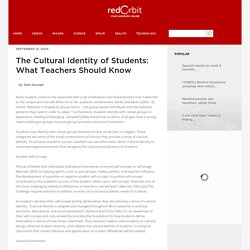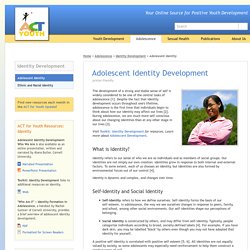

Understanding how learners succeed and struggle across time, space, and social groups. It is not uncommon for children to thrive in one learning context but struggle in another.

What accounts for such differences? The authors Bell, Tzou, Bricker, and Baines argue that we lack theory and research for understanding how people do and do not experience meaningful learning across formal and informal settings, over long time periods, and through various cultural value systems. Building on theories describing learning as social and situated (see Theoretical Basis below) as well as on their eight years of ethnographic research, the authors introduce “cultural learning pathways” as a framework for making sense of how people learn across time, spaces, and cultural value systems. This theory describes how pathways begin at a point of interest.
The interest is either supported or challenged by social norms or belief systems and by relationships that change over time and across social contexts. The authors use the theory of cultural learning pathways in three case studies. Brief Identifying Understanding. Factsheet13. Teaching Tolerance - Diversity, Equity and Justice. Educators today hear a lot about gaps in education – achievement gaps, funding gaps, school-readiness gaps.

Still, there's another gap that often goes unexamined: the cultural gap between students and teachers. "A bunch of teachers here, they think they know what's wrong with us. But they don't know. If people want to help us, they have to see what we've been through, not from what their own experiences tell them. " – Billie, a Lakota teen speaking of the teachers at her high school Most of us in the education profession are white, middle-class, monolingual-English speakers.
But the truth is: culture matters. Culture isn't just a list of holidays or shared recipes, religious traditions, or language; it is a lived experience unique to each individual. Hear elementary school teacher, Diane Holtam, speak about how she works with other teachers to disabuse stereotypic notions of Asian American students' abilities. Look For: Go Deeper: You're Asian, How Could You Fail at Math? Reflect On: The Cultural Identity of Students: What Teachers Should Know - Redorbit.
September 21, 2005 by Sam Savage Every student conies to the classroom with a set of behaviors and characteristics that makes him or her unique and that will affect his or her academic achievement.

Banks and Banks (2005, 13) noted, "Behavior is shaped by group norms ... the group equips individuals with the behavior patterns they need in order to adapt. " Furthermore, students identify with certain groups to experience a feeling of belonging. Campbell (2004) stated that students of all ages have a strong need to belong to groups, because groups provide a source of motivation.
Untitled. "How Do I Evolve From Confusion and Chaos to a Capable, Strong, Compassionate Woman?

" Age 15 For a complex set of reasons, most of what is known about adolescent girls focuses on the problems they face. Sociocultural influences on adolescent boys’ body image and body change strategies. Abstract Society provides messages about how people should ideally look and previous research has indicated these messages, both the actual messages provided and the perception of the message, influence body image.

Research into male body image has shown males are concerned with having a lean and muscular body and as such, may want to decrease fat and increase their muscles. This paper explored the influence of a range of messages from parents, peers, and the media on a number of different measures of 362 adolescent boys’ body image and body change strategies. Specifically, messages about shape, food, exercise, losing weight and increasing muscles were explored in relation to satisfaction with weight and muscles, and the use of strategies to decrease weight and increase muscles.
Keywords Adolescent boys; Sociocultural influences; Body image; Body change strategies Choose an option to locate/access this article: Lifehack. The Sociocultural Approach - Bronfenbrenner's Ecological Approach. Amazon. Adolescence and Internet Identity. 8. Intergroup Theories (Integrated Threat, Social Identity, and Social Dominance) - PSYCH 484: Work Attitudes and Job Motivation - Confluence.
A Tale of Two Teachers. How to Recognize Your Cultural CompetenceA group activity at the ASHA convention opened this SLP’s eyes to the fluidity of her own cultural identity. And to how much that matters. Names & Cultural Identities in Stories of Immigrant Children. Do you teach immigrant children?

Or, would you like your students to understand the perspectives and have compassion for immigrant children? Here is a lesson plan for elementary school students that discusses personal names, moving from one country to another, and adopting aspects of the new culture while maintaining cultural identity. I have chosen several books representing characters from different countries, for different ages levels, that tell about children that have struggled and succeeded with this assimilation. Many stories show why children have decided to keep or change their name for different reasons.
These stories provoke discussion on the significance of our names and identities, the process of adapting to a new culture and language, and the challenges of making new friends. This post contains affiliate links. Pre-Reading Questions: 1) What is your full name? Ages 4+ Ages 5+ Ages 6+ Ages 7+ Identity and bi-cultural development. Racial/Cultural Identity Development Model. ACT for Youth - Adolescence - Adolescent Identity Development. The development of a strong and stable sense of self is widely considered to be one of the central tasks of adolescence [1].

Despite the fact that identity development occurs throughout one's lifetime, adolescence is the first time that individuals begin to think about how our identity may affect our lives [2]. During adolescence, we are much more self-conscious about our changing identities than at any other stage in our lives [3]. Visit Toolkit: Identity Development for resources. Learn more about Adolescent Development.
What is Identity?